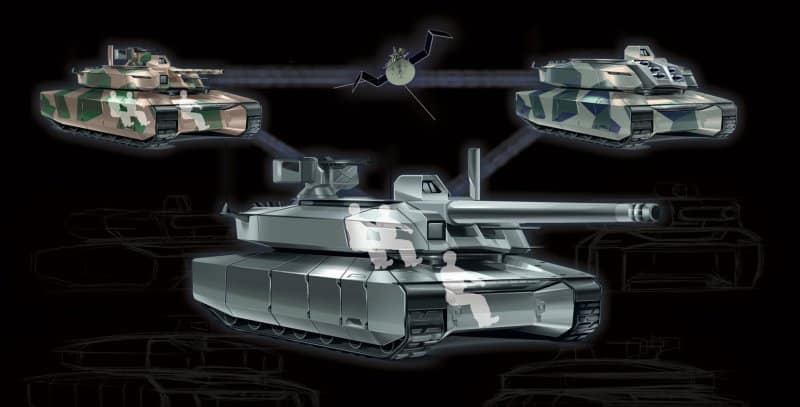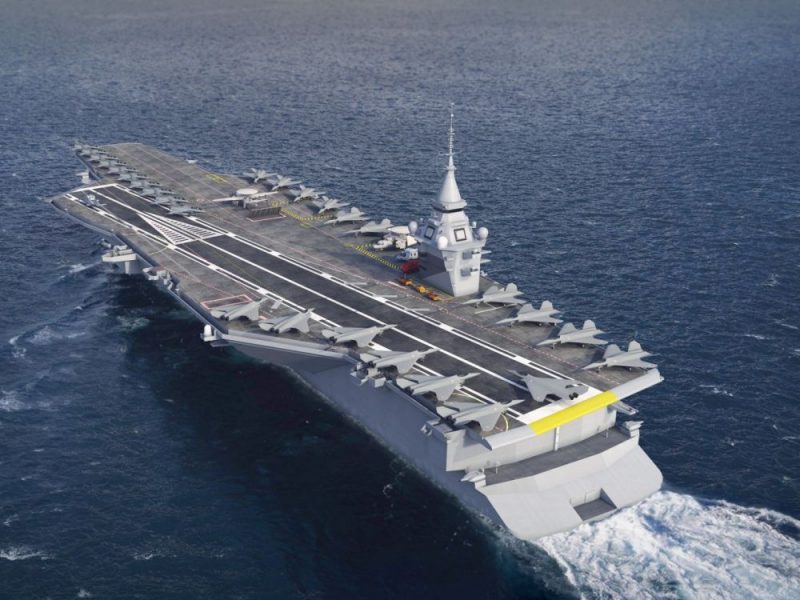Just two years ago, the Minister for the Armed Forces, Florence Parly, formalized the start of study work for the construction of a new aircraft carrier intended to replace the Charles de Gaulle from 2038.
Since then, much information has filtered out regarding this program, which should be, like the Charles de Gaulle, nuclear-powered, and reach 75.000 tonnes of displacement, in particular to be able to implement the new 90-meter electromagnetic catapults necessary to launch the new Next Generation Fighter from the FCAS program, itself much more imposing than the Rafale M.
Predictably, the costs of designing and manufacturing the ship have also experienced a very significant increase compared to the €2 billion that the Charles de Gaulle had cost built in the 90s.
Indeed, while initially the new aircraft carrier was estimated between 5 and 6 billion euros, it would now be a question of a cost of design and construction around 8 billion euros, or even more. And in the context of the preparation of the next Military Programming Law 2024-3020, which will nevertheless be endowed with around €400 billion, i.e. €100 billion more than the previous one, this cost poses a problem...
In fact, whether it is the PANG new generation aircraft carrier program, the FCAS 6th generation combat aircraft program, the MGCS future combat tank program, as well as the SSBN3G 3rd generation ballistic missile nuclear submarine program essential to French deterrence, all promise to be particularly greedy in credits, to the point of handicapping the reconstruction of certain capacities of the armies, as in the case of the heavy armored force, or long-range artillery.
The fact is, whether it is FCAS, MGCS or PANG, it appears that each of these programs aims to develop hardware that is much larger and more expensive than the ones they will replace, not only because of the increase in technological costs and inflation, but also because of much higher ambitions, bringing French industrial defense production closer to equipment produced by the United States, and de facto moving away from what has traditionally made the operational and commercial success of French defense equipment since the 60s.

Indeed, if France devoted more than 4% of its Gross Domestic Product to its defense effort at the beginning of the 60s, the French economy was barely recovering from the scars of the Second World War, forcing the country to be inventive to design high-performance and attractive equipment, but much less expensive than the American weapon systems which imposed themselves on the market.
This is how the French aircraft manufacturer Dassault Aviation designed the Mirage III, a fighter interceptor half the weight of the imposing F-4 Phantom II, surpassing in almost all areas the F-104, while being significantly less expensive than these two devices.
At the same time, building on the success of the AMX-13, AMX designed the 30-ton AMX-36 medium tank, when the United States was producing the M-60 over 52 tons. As for the two French aircraft carriers, the Clemenceau and the Foch, they barely exceeded 32.000 tons at full load for a length of 265 m, where the American Forrestals flirted with 80.000 tons for 326 meters long.

The rest of this article is for subscribers only
The Classic subscriptions provide access to
all articles without advertising, starting at € 1,99.
Newsletter subscription
Register for the Meta-Defense Newsletter to receive the
latest fashion articles daily or weekly


[…] […]
[…] Since then, a lot of information has filtered out regarding this program, which should be, like the Charles de Gaulle, nuclear-powered, and reach 75.000 tonnes of displacement, in particular to be able to implement the new 90-meter electromagnetic catapults necessary to launch the new Next Generation Fighter of the FCAS program, itself much more imposing than the Rafale M. Very predictably, the design and manufacturing costs of the ship also saw a very significant increase compared to the €2 billion that the Charles de Gaulle built in the 90s had cost. Indeed, while initially the new aircraft carrier was estimated at between €5 and €6 billion, it would now be a question of a design and construction cost of around €8 billion, or even more. And in the context of the preparation of the next Military Programming Law 2024-3020, which will nevertheless be allocated around €400 billion, or €100 billion more than the previous one, this cost poses a problem... READ MORE. […]
[…] Aircraft carriers NG, FCAS, MGCS ..: Did France aim too high? […]